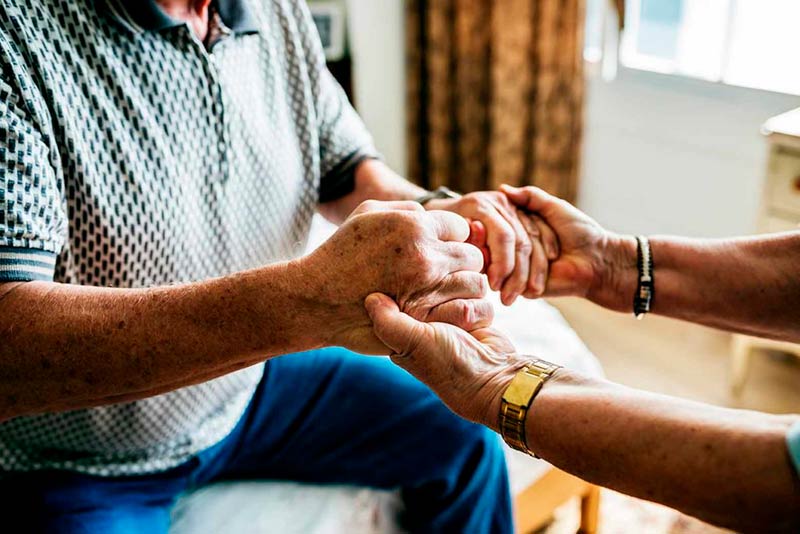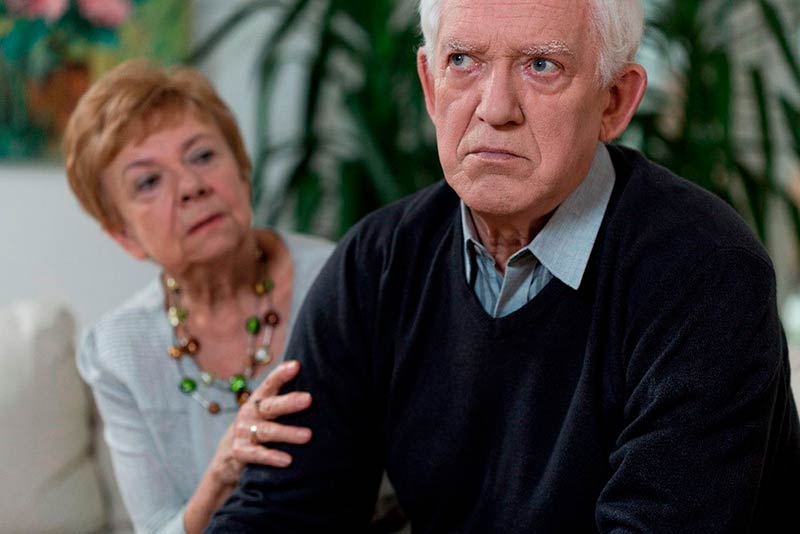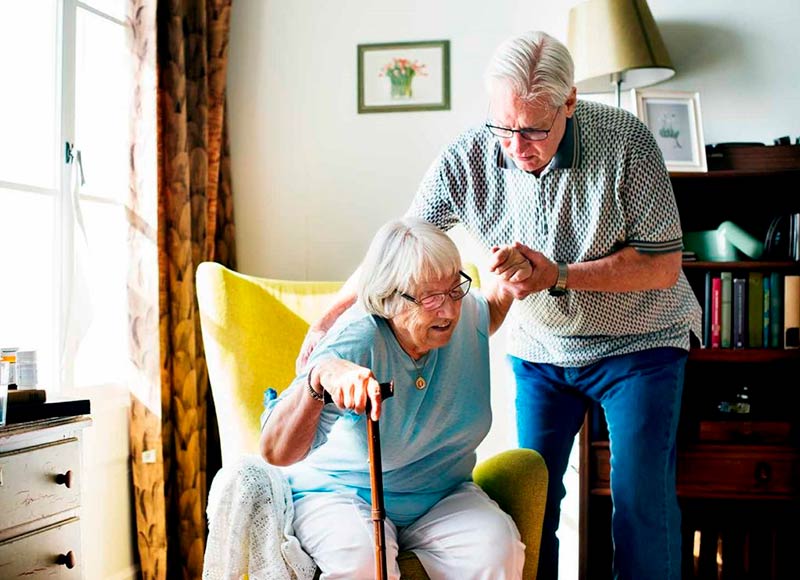When is it the right time to buy a stairlift?
What happens when a staircase is no longer an ally in your journey, but a recurring reminder of your physical limitations?
Stairs can come in many shapes and forms. They can form straight or spiral staircases, be indoors or outdoors, and you can build them for practical reasons, for the way they’ll look, or both. But what all stairs have in common is that they dictate your pacing as you walk up or down them.
It’s all fine when you’re feeling strong and healthy, but then, suddenly, something changes. It can happen at any age. It can be due to an injury, due to the natural effects of ageing or the onset of arthritis. The problem could be in your knee joints or in your hip; it could be caused by a heart disease or anything else that makes it painful for you to use your stairs.
Before you know it, the staircase is no longer an ally that allows you to get from point A to point B. Suddenly, such a familiar and recurrent structure in your daily routine becomes the enemy that limits your daily routine, constantly reminding you of your physical limitations.

Contents
Our hero is confronted with a challenge: the acknowledgment of physical decline
The hero rejects the challenge: “getting a stairlift for my house? I’m not old!”
The hero starts his role of trials: this can go on for years!
Confront evil and defeat it: overcome the psychological barriers!
Confront evil and succeed: the best decision has been made!
The student becomes the teacher: advocating!
The reason we decided to write about this sensitive topic is because we really wanted to try addressing this issue in a genuine, sincere and positive way. Therefore, it seemed like a good idea to use Richard Campbell’s theory of “The Hero’s Journey” from The Hero with a Thousand Faces (1949). We understand that our customer’s lives aren’t like epic sagas (most of the time), but they do have truly meaningful and emotional stories that are worth sharing. And because we have been giving it some thought for a while now, we’ve found a pattern in the stages our customers usually go through in their journey towards the decision to regain their independence at home… and we know many will relate to that journey.
But why “journey” and why “hero”?
Even after over 750,000 stairlift installations, we have never stopped being amazed by every physical and psychological struggle our customers have faced to get to the point they are at now – where they glide up their stairs in comfort and safety. That is why we see them as real-life heroes, and we truly believe their stories are worth sharing.
All our customers have different stories, so we started by looking for something they all have in common. And we found something.
The common thread is they all go through a similar “process” of acknowledging and accepting a new reality. A process that is by no means easy. Regardless of the culture or market, some journeys of acceptance can take a few days, others may take years. After 40 years in the business, we can see that there’s an archetypal story behind each journey, and we know our customers well enough to understand what the obstacles they face along the way are. At the end of their journey, it almost feels like the stairs themselves set the plot that gives our heroes the opportunity to learn the lessons or meet the allies they need in order to overcome that obstacle, to grow and to mature in order to have a more positive approach towards life.
Our hero is confronted with a challenge: the acknowledgment of physical decline

Through all these years in the business, we have also seen that the stigma and the resistance towards the acceptance of a mobility aid is a reality, because youth and strength has always been the definition of what’s good and desirable in our society.
Since classical Greek and Roman cultures, old age was perceived as a stage of decline and decrepitude, while strength and youth were valued above all. In fact, a lot of people who need mobility aids are afraid to get them and get nervous about the idea of using them in front of others. That is why during all these years in contact with our customers, Stannah has always tried to address this stigma in the most positive and sincere way possible. It all starts with being understanding and letting our customers take their time on their own, personal journey. Even so, we never let go of our heroes, and we never stop trying to improve their experience along their journey towards getting their independence back at home.
In order to fulfil the dream of ageing in place, many factors have to be taken into consideration and planned ahead. For example, something as simple as wearing proper footwear that reduces their risk of falling can be something people fear as they age, because they feel they’re slipping into the “old” category. Recognising that mobility can change over time and that tasks that are easy today could become difficult tomorrow, can be a big challenge, and just thinking about this can be stressful and depressing for many.
That is why making good decisions to improve quality of life at home isn’t something obvious. It can be incomprehensibly hard. And when stairs are a problem, things can become even more difficult.
While the benefits of becoming a hero in their own journey can be genuinely and positively life-changing, accepting physical decline and that they really need a stairlift is the hardest challenge for a lot of people.
The hero rejects the challenge: “getting a stairlift for my house? I’m not old!”

Human beings have a tendency to sort people into categories. In fact, we’ve been categorising people since the dawn of civilisation. When someone reaches the age of 65, they’re categorised as a senior citizen, even if that person does not recognise themselves as being elderly or senior. Unfortunately, there’s always a stigma associated with “old people” and “old age,” and that is why many fear acknowledging they’re getting older.
Transposing this observation onto the difficulty many people face when climbing the stairs, at Stannah we know this difficulty can be caused by a myriad of different conditions. However, according to our latest worldwide market research, we realised that knee pain affects almost 50% of users of our stairlifts – knee pain caused either by injury, joint wear or an arthritic condition. This is the most common example, so it’s the most universal story we can tell: the story of knee pain.
Let us tell you the story of a woman or a man in their late fifties/ early sixties. Although they don’t consider themselves “senior” or “old”, by any means, they struggle with knee pain whenever they need to get around their house. What is most likely to happen is that they start avoiding going upstairs as much as possible. Then, when the pain gets worse, they’ll start grabbing the banister with both hands as they climb their stairs, or even climb them on all fours. But still, they will refuse help and avoid the thought of using any kind of mobility aid. It may seem obvious to someone reading this that accepting a mobility aid is the most obvious solution, but only those who have been through this journey will understand how difficult it is to let go of the illusion that we are still “able” to climb the stairs like we did when we were younger, even when it’s no longer safe. That’s when our hero starts putting emotional or strategic blocks between themselves and their goal.
The hero starts his role of trials: this can go on for years!

Let’s picture our heroes – they don’t know they are heroes yet – and their role of trials that could go on for several years. They even plan their day around the stairs (coming down in the morning and avoiding going back up until it’s time for bed), which is a tell-tale sign that it’s time to consider making a change.
At this stage of our heroes’ journey, they already know there is a solution that would make the process of climbing the stairs easy and painless. However, because they see buying a stairlift as an acknowledgement of their physical decline and ageing, they reject the solution and will continue to use the stairs while in pain – struggling to avoid a fall. They could even start to consider more expensive solutions than a stairlift. Options such as moving to a single-storey home might even appeal to them more than having to use a mobility aid. But how easily can you let go of the home you love? Of all your memories and possessions? Think of the toll it would take on you to move out of the place you call your own.
Unfortunately, this rejection can go on for years, while health conditions get worse or even until an incapacitating fall occurs. Our heroes live their roles of trials, trying not to give in to the option of assisted mobility. That is why our first contact with our customers is usually after many years of struggle and suffering. Sadly, sometimes it is even after a fall has already happened. That is why we can never talk enough about prevention and we are always glad when families call us, seeking preventative measures before their loved ones have a chance to injure themselves.
Confront evil and defeat it: overcome the psychological barriers!

At this point, family members have been concerned for their loved ones’ safety when using the stairs for a while. It’s inevitable. Everybody is aware that the person can no longer face the stairs alone and the risk of falling is imminent. And eventually, our heroes start thinking about how a fall would affect not just them, but their entire family. This is when our heroes’ egos die. Suddenly, they realise they have more important things to do than worry about the stairs. At this stage, our heroes develop the wisdom they need in order to understand the process they’ve been through, so they can now see, feel and recognise that they need to take the next step towards accepting help, not just for their sake, but for their family’s peace of mind.
Some people may still think of a stairlift as a luxury, but after witnessing many cases of serious injuries resulting from falls, they become more convinced than ever that a stairlift is a necessity for them and their family members. Imagine being able to go down stairs to check on the dog or flip a load of laundry, without fear or anxiety! Acknowledging this takes them a step closer to becoming a hero of their own journey. It means they made the right decisions along the way.
Confront evil and succeed: the best decision has been made!

When we first visit our customers, the first approach is always to understand and assess their mobility difficulties and understand their physical limitations and the impact they have on their daily routine. Asking questions like: “Are you able to carry things up and down stairs? Do you need a handrail? Can you walk more than 200 yards across a flat surface without help?” will surprise many of them, but honest self-evaluation is critical here and our heroes won’t be offended by them at this point.
Their first experience using their new stairlift is usually a victorious moment for our heroes and for all their family members. It makes everyone wonder why this success couldn’t have happened initially. It’s because our heroes had to go through a process of learning and change, in order to reach the point they’ve got to.
Once they reach that point, the possibility to age in place becomes a reality, and coming to the realisation that there will be no need to move home is a victory as well. Choosing the elegant simplicity of a stairlift, instead of giving up your home and dealing with the complexities of a full-scale move, seems the most consciousness and practical decision. You can simply solve the issue of the stairs and keep the rest of your home the way it is. With a stairlift, you can hang on to your prized possessions and proudly display them throughout your home. Over 750,000 people have stairlifts at home. How wrong could that many people be?
The student becomes the teacher: advocating!

Shot of a senior couple using a laptop at homehttp://195.154.178.81/DATA/i_collage/pu/shoots/805517.jpg
Our hero has been through all the previous steps and now realizes that others are where he was before: far away from safety and independence when using the stairs. But every Stannah customer will find their “critical path” to victory and will end up teaching others. This is how we have always move forwards as a society – trying to move away from pain and teaching others how to do so too. Our heroes will teach others about what they went through and will share their story. And we are happy about the fact that for most of our customers, the benefits of a stairlift in maintaining independence and control have led to an increase in their quality of life that allows them to save energy for the more enjoyable things.
So many customers have reached the victorious end of their journey, inspiring Stannah to continue on its mission to destigmatize the stairlift. We need to overcome the resistance towards assistive mobility devices and destroy the stigma associated with mobility aids.
Hopefully, little by little, fewer customers will have to go on the painful journey to beat all the psychological barriers. Ultimately, considering buying a stairlift sooner rather than later means you can reap the benefits for many years to come. That is why telling this story is important.
As for Stannah, we will continue to think of our customers as increasingly and generally more brand and design conscious, keener to assert their individuality and embrace ageing with a positive attitude, making the most of the technology at their disposal and with the power to rewrite their own journey towards independence and safety at home.